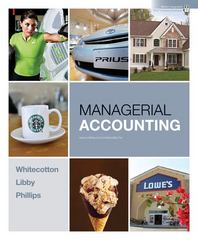Question
1. Which of the following is most likely to be true for a portfolio of 40 randomly selected stocks? Answer The riskiness of the portfolio
1. Which of the following is most likely to be true for a portfolio of 40 randomly selected stocks?
Answer
| The riskiness of the portfolio is the same as the riskiness of each stock if it was held in isolation. |
| The beta of the portfolio is less than the average of the betas of the individual stocks. |
| The beta of the portfolio is equal to the average of the betas of the individual stocks. |
| The beta of the portfolio is larger than the average of the betas of the individual stocks. |
| The riskiness of the portfolio is greater than the riskiness of each of the stocks if each was held in isolation. |
2. Which of the following statements is CORRECT?
Answer
| A portfolio that consists of 40 stocks that are not highly correlated with "the market" will probably be less risky than a portfolio of 40 stocks that are highly correlated with the market, assuming the stocks all have the same standard deviations. |
| A two-stock portfolio will always have a lower beta than a one-stock portfolio. |
| If portfolios are formed by randomly selecting stocks, a 10-stock portfolio will always have a lower beta than a one-stock portfolio. |
| A stock with an above-average standard deviation must also have an above-average beta. |
| A two-stock portfolio will always have a lower standard deviation than a one-stock portfolio. |
3. Stocks A and B have the following data. Assuming the stock market is efficient and the stocks are in equilibrium, which of the following statements is CORRECT?
| A | B | |
| Price | $25 | $25 |
| Expected growth (constant) | 10% | 5% |
| Required return | 15% | 15% |
Answer
| Stock A has a higher dividend yield than Stock B. |
| Currently the two stocks have the same price, but over time Stock B's price will pass that of A. |
| Since Stock A's growth rate is twice that of Stock B, Stock A's future dividends will always be twice as high as Stock B's. |
| The two stocks should not sell at the same price. If their prices are equal, then a disequilibrium must exist. |
| Stock A's expected dividend at t = 1 is only half that of Stock B |
Step by Step Solution
There are 3 Steps involved in it
Step: 1

Get Instant Access to Expert-Tailored Solutions
See step-by-step solutions with expert insights and AI powered tools for academic success
Step: 2

Step: 3

Ace Your Homework with AI
Get the answers you need in no time with our AI-driven, step-by-step assistance
Get Started


